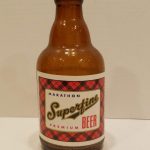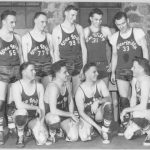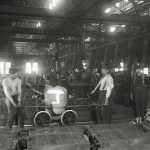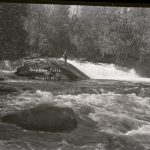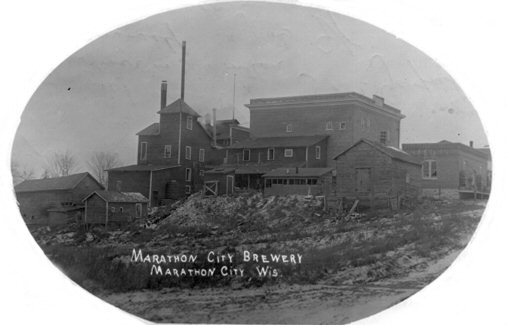 In the early 1880s, Franz Sindermann, who was trained as a brewer in Germany, formed a brewery in Marathon, Wisconsin with his brother, August, along with a third partner, Charles Klein. The brewery got off to a good start, producing 300 barrels in its first year, but Franz Sindermann’s untimely death in 1898 brought things to a halt.
In the early 1880s, Franz Sindermann, who was trained as a brewer in Germany, formed a brewery in Marathon, Wisconsin with his brother, August, along with a third partner, Charles Klein. The brewery got off to a good start, producing 300 barrels in its first year, but Franz Sindermann’s untimely death in 1898 brought things to a halt.
The business was sold by the surviving partners to Oscar and George Stuhlfauth of Chicago, and the brewery once again began to be produce beer. However, the operation suffered from incredibly poor luck. The beer was kept on a lower level of a two-level cellar that the Stuhlfauth brothers added to the brewery. To keep the beer cool, the placed big chunks of ice on the level above the beer. The ice, which was collected from the nearby Rib River, was too heavy and the floor crashed into the drinks, destroying the product. After purchasing an ice machine near the turn of the century, there was not much improvement. The pipes on the machine broke, resulting in an ammonia leak. This destroyed the beer and made it unable to consume or sell.
Not long after new owners Nicholas Schmidt and Fred Brand came into the picture in 1903, a fire started in the boiler room of the brewery. It destroyed the wooden structure of the building, and it took almost a year for them to start producing beer again. They rebuilt the brewery with bricks in the hope that it would make the building more fireproof. Yet the brewery’s location at the bottom of a hill led to other difficulties. A truck filled with ninety-six ten-gallon milk cans lost control and crashed into the garage of the brewery. Though the garage was often filled with the beer, on this day there were only empty bottles inside. For once in the brewery’s chain of calamities, no beer was lost on this particular occasion.
In the early 1960s, the brewery began struggling to keep up with orders. They went to the Oshkosh Brewing Company to fill the kegs with beer from the Oshkosh brewery. The Marathon Brewery kept it a secret that the beer being distributed as Marathon Lager was Chief Oshkosh Beer. There were many smaller breweries in Wisconsin that were putout of business by the bigger and more productive breweries, specifically the Miller Brewing Company in Milwaukee and Anheuser-Busch in St. Louis. One reason that the Miller Brewing Company thrived compared to other breweries in the twentieth century is that during Prohibition, they continued selling popular non-alcoholic drinks, such as root beer, though they stayed prepared to sell beer for when it was again legal. By the 1960s, many smaller breweries struggled to keep up and went out of business. The Marathon Brewery was not able to keep up with the bigger breweries and sold their labels to the Marshfield Brewing Company. Their doors closed in 1966.
Written by Megan Schaefer, August 2021.
SOURCES
Apps, Jerry. Breweries of Wisconsin. Madison, WI: The University of Wisconsin Press, 1992.
Volkmann, Kathy. “Brewing the Beer That’s Superfine!” Marathon County Historical Society. Accessed August 30, 2021, www.marathoncountyhistory.org .
“Last County Brewery Has Closed Its Doors.” Record Herald (1966).
Liss, Douglass. “The History of Marathon City Brewing Co.” American Breweriana Journal (2006).
